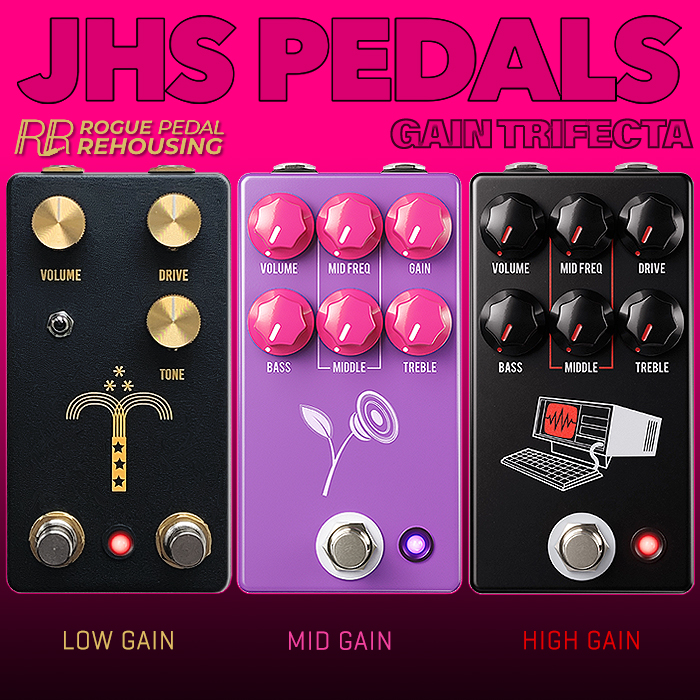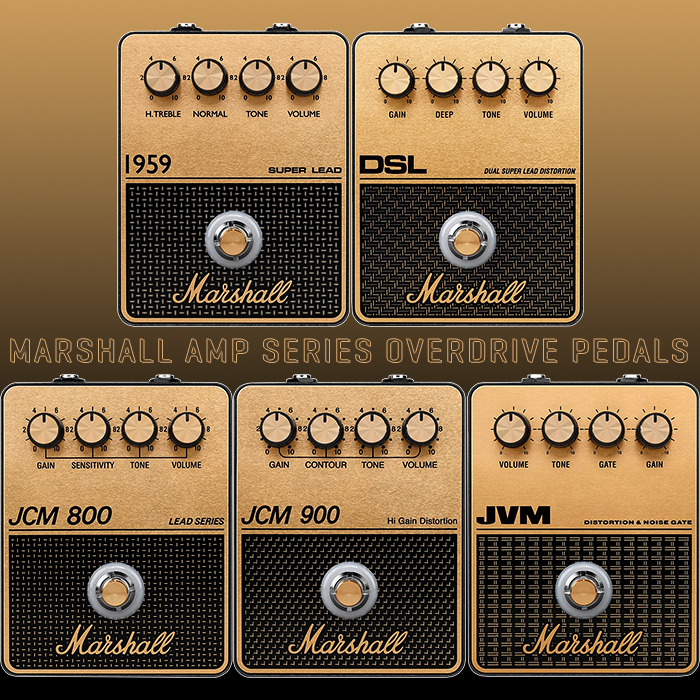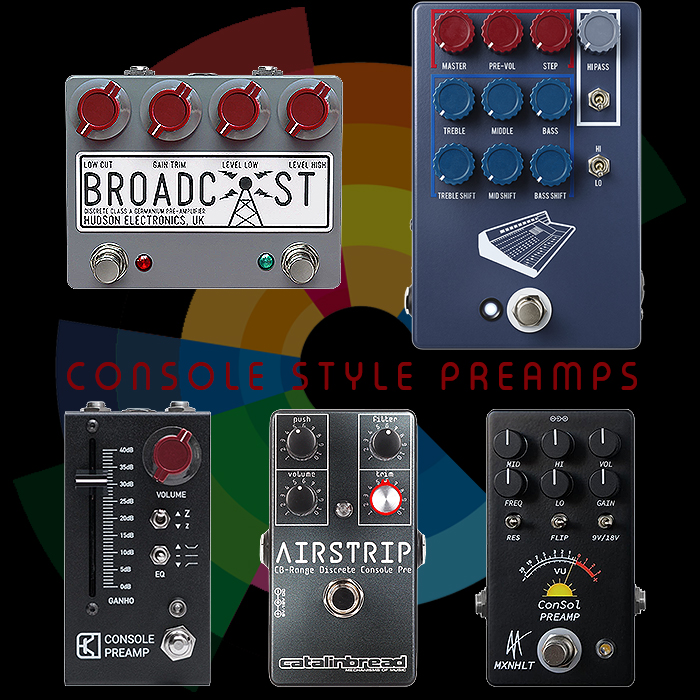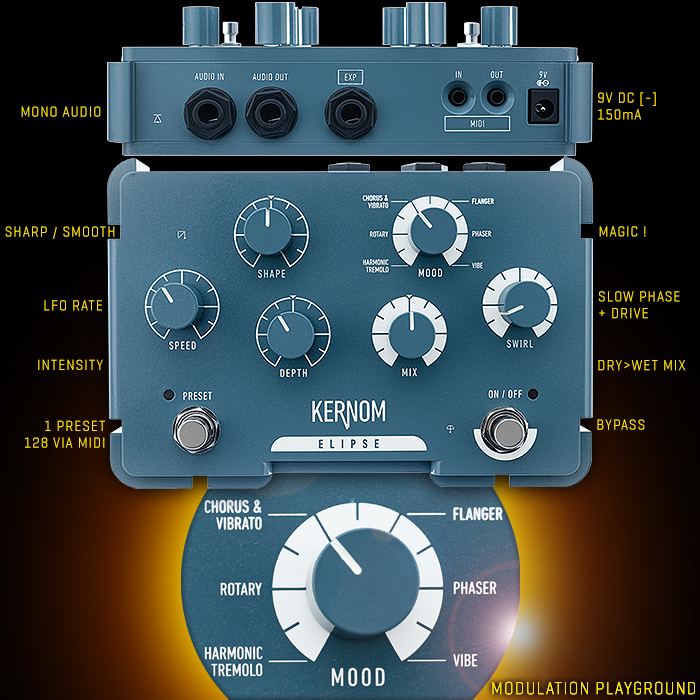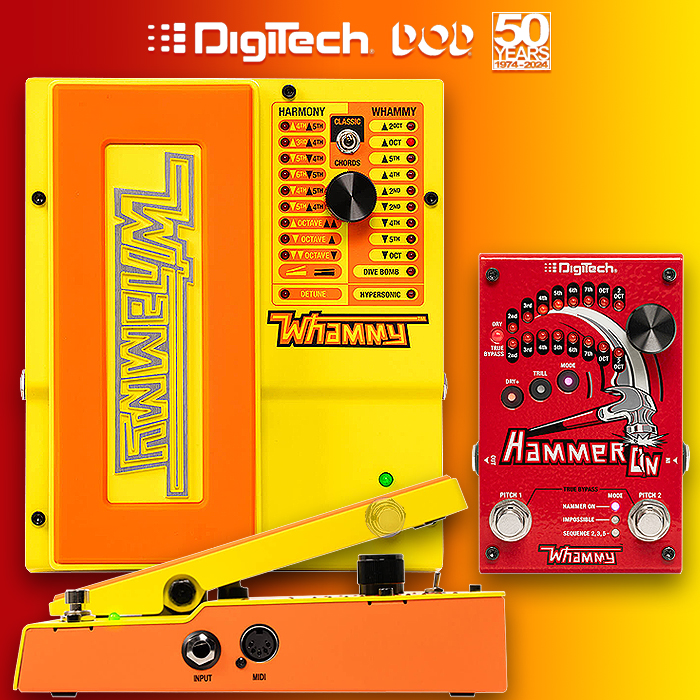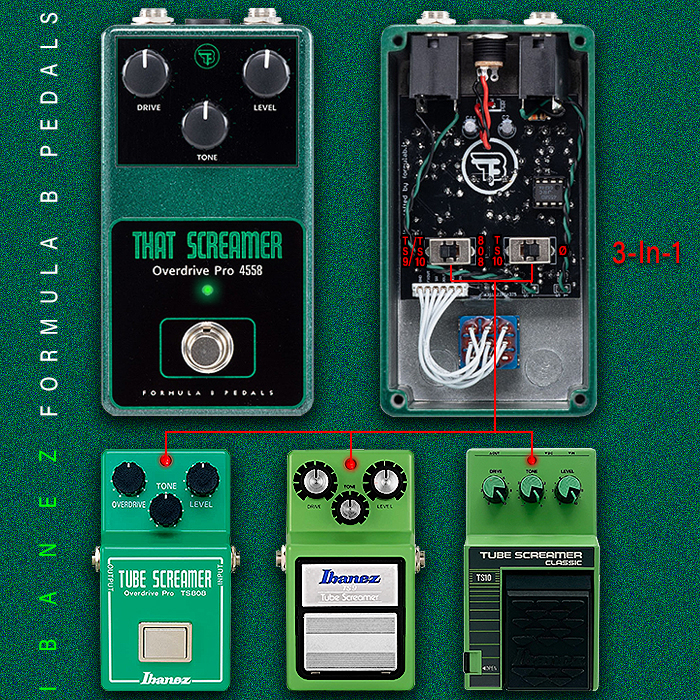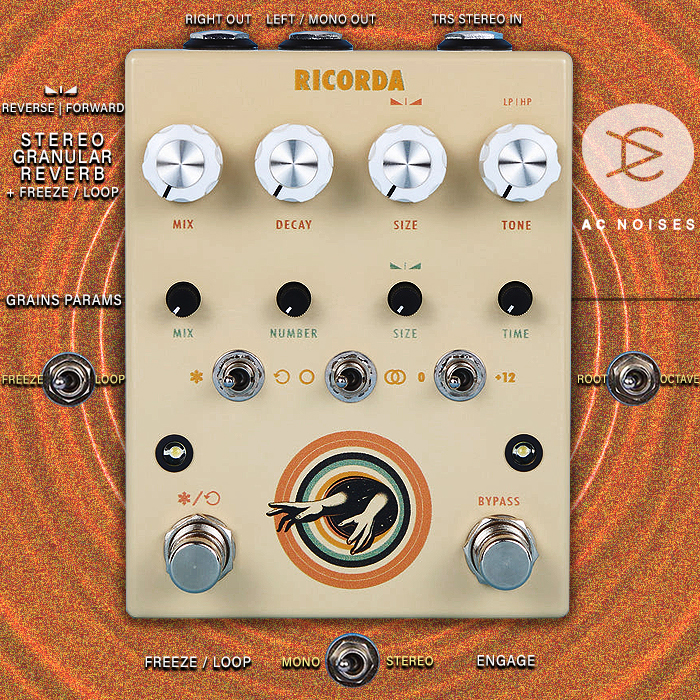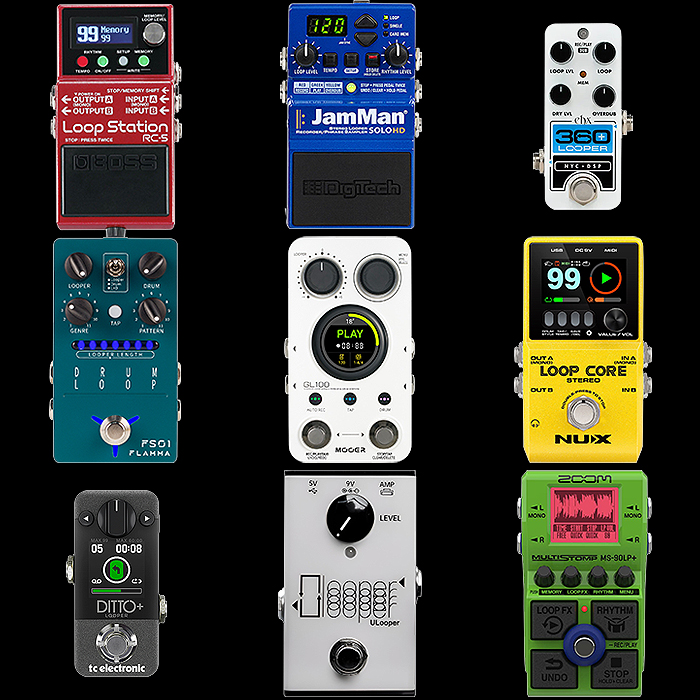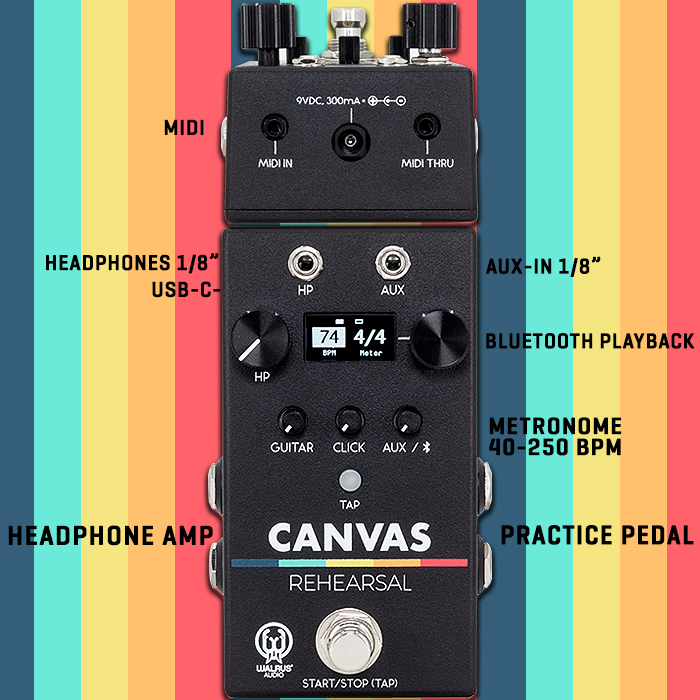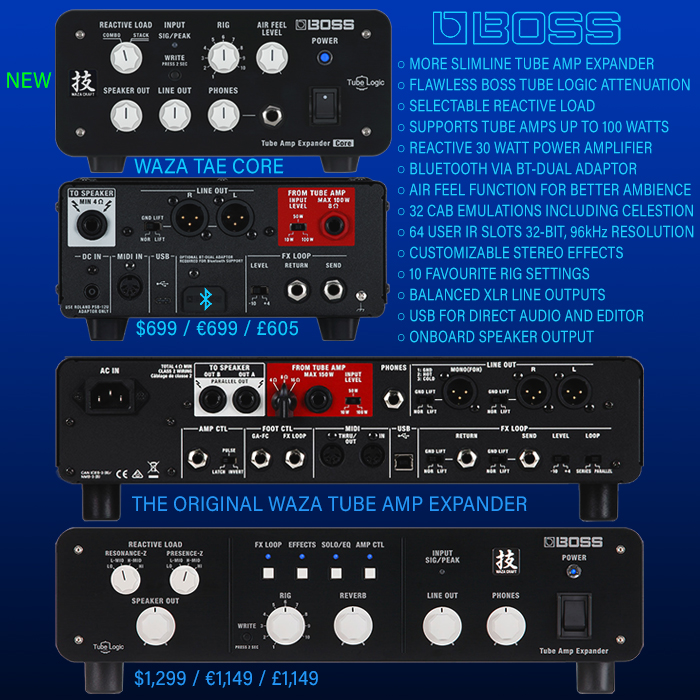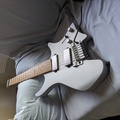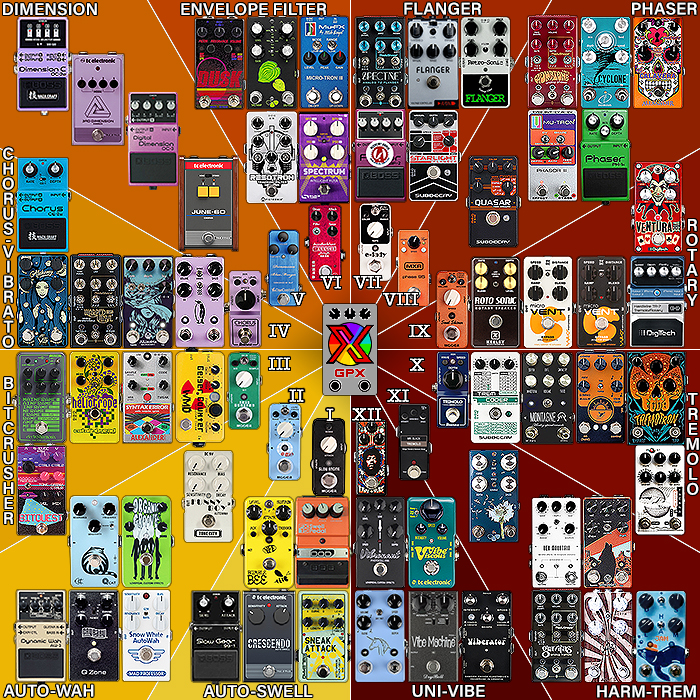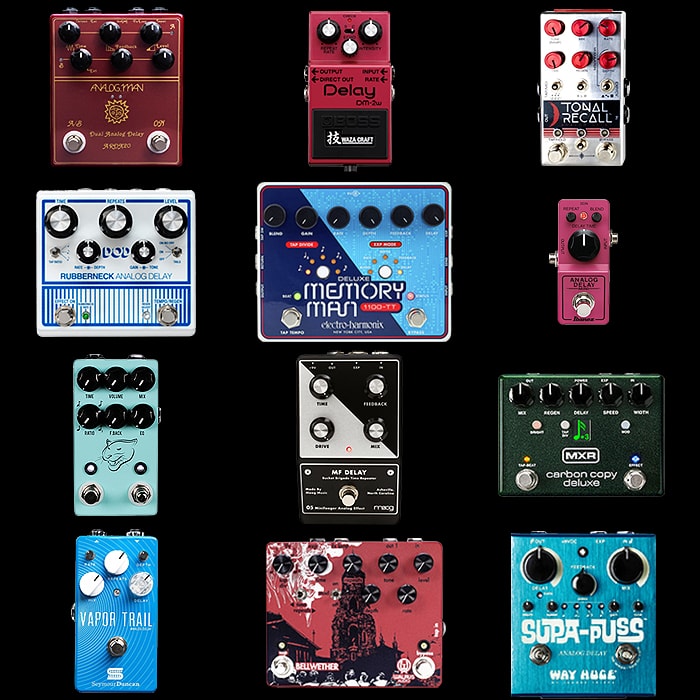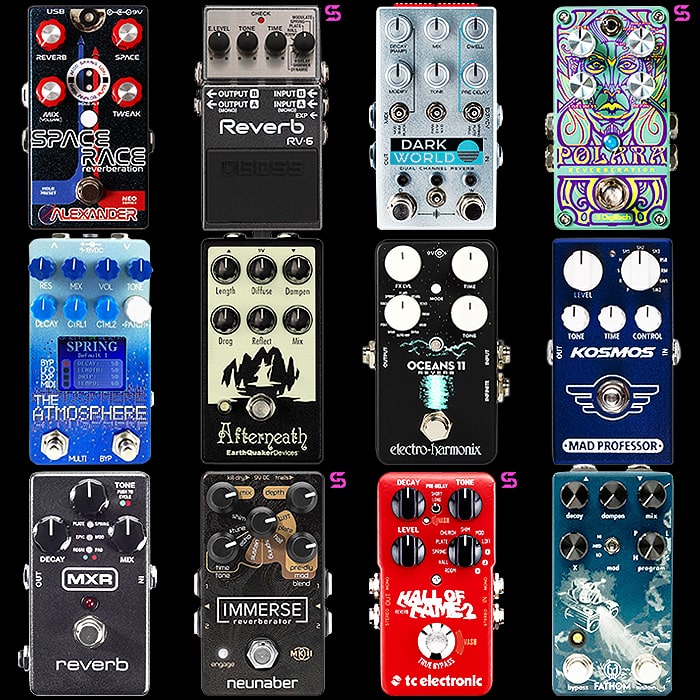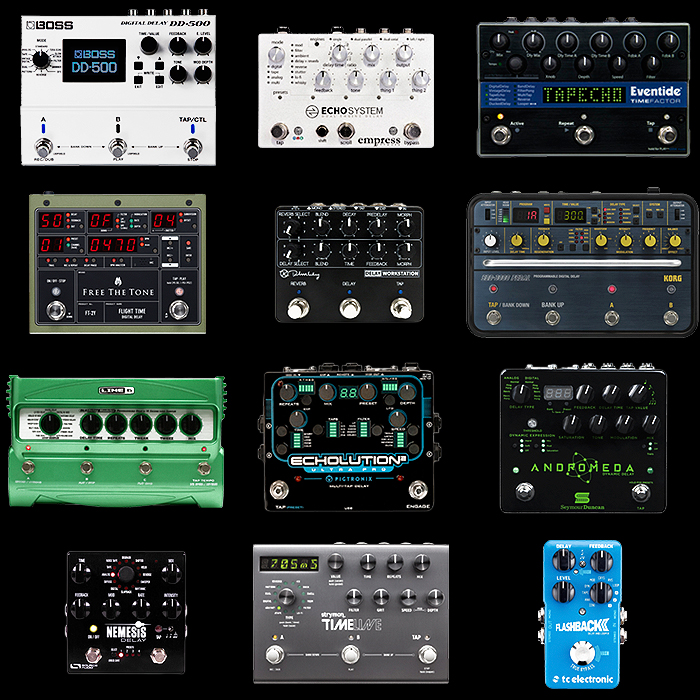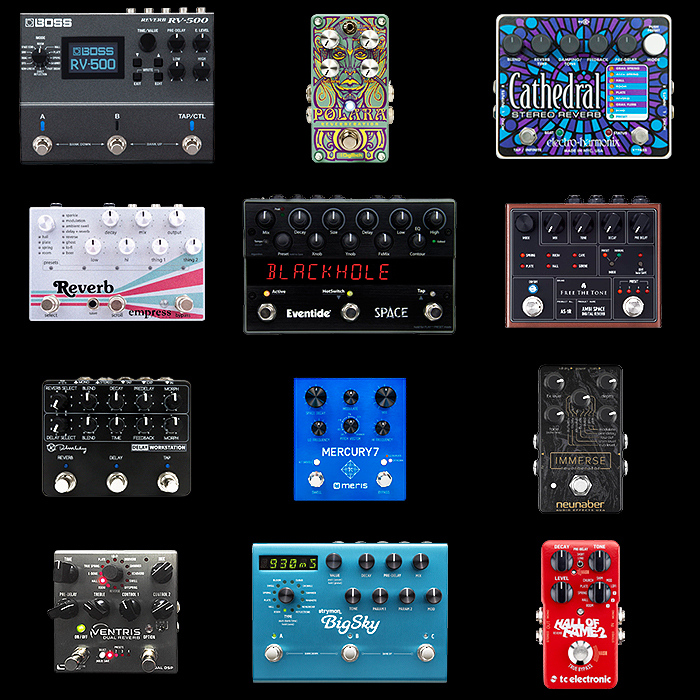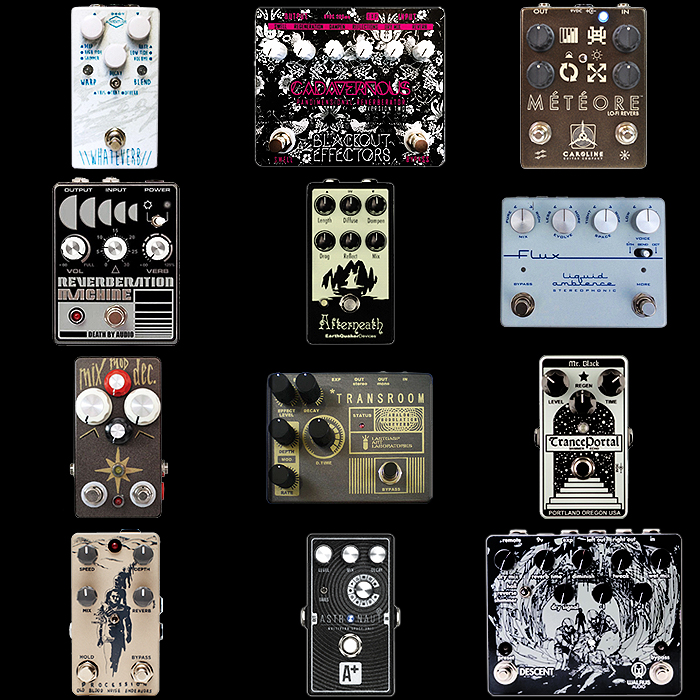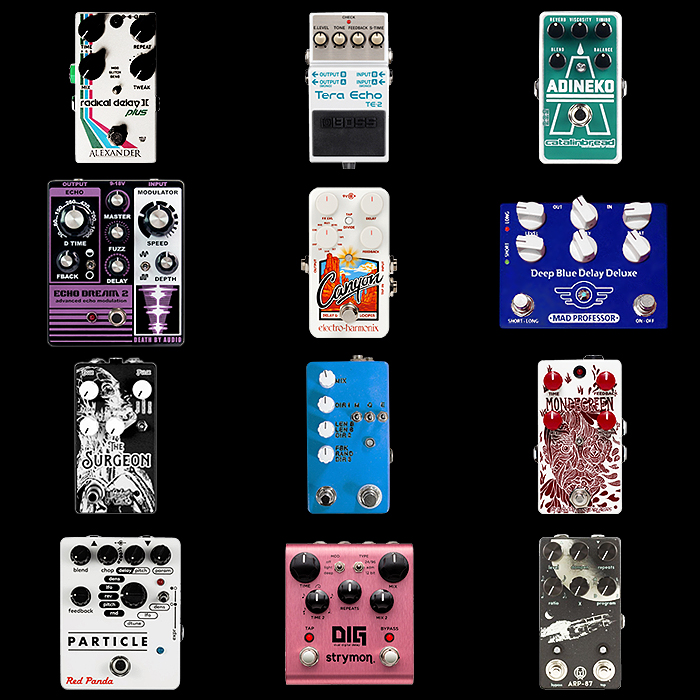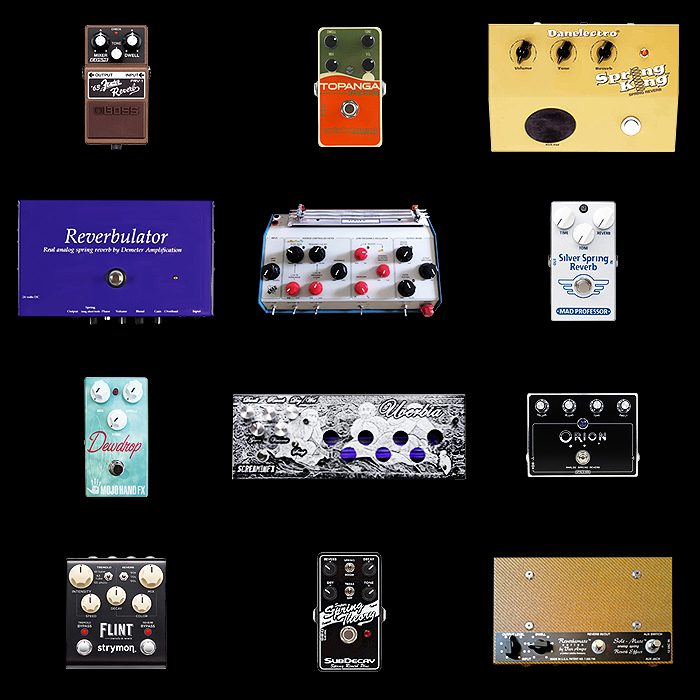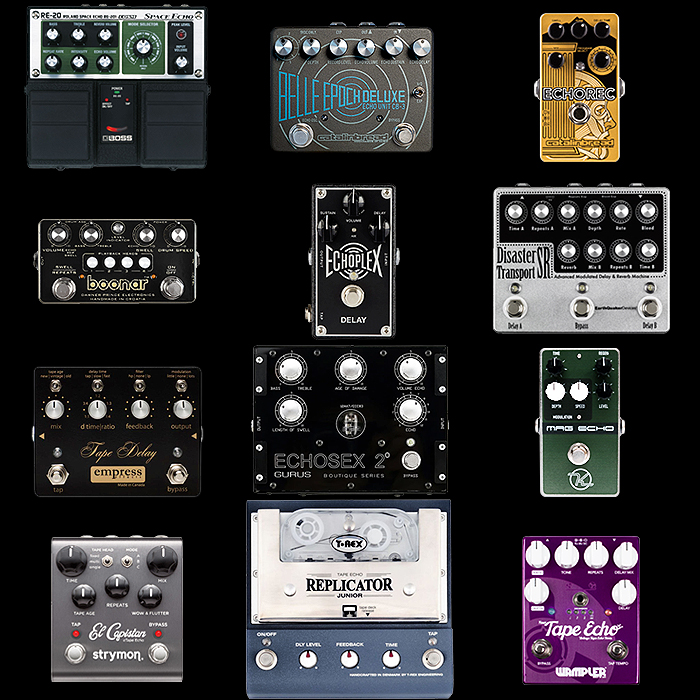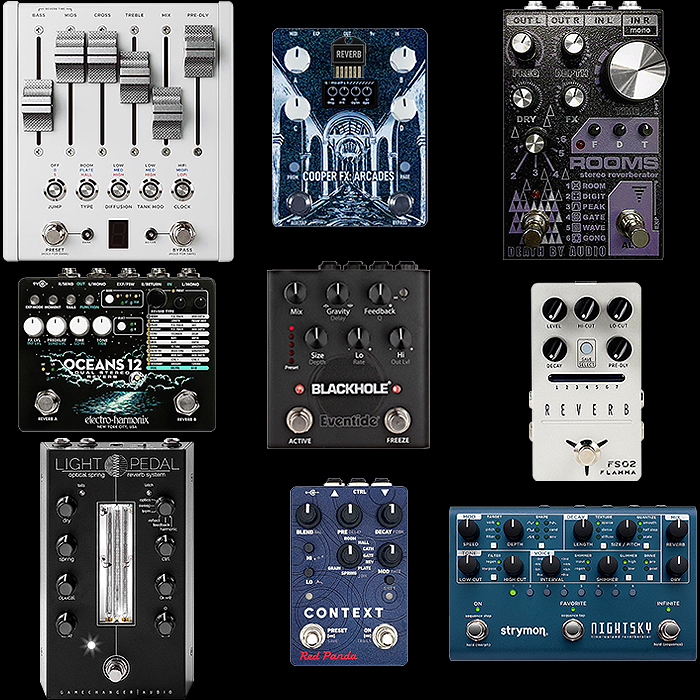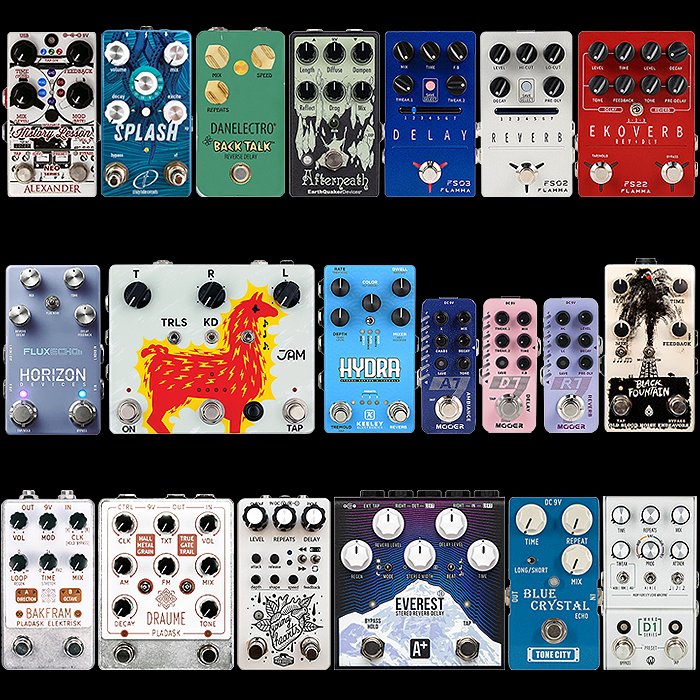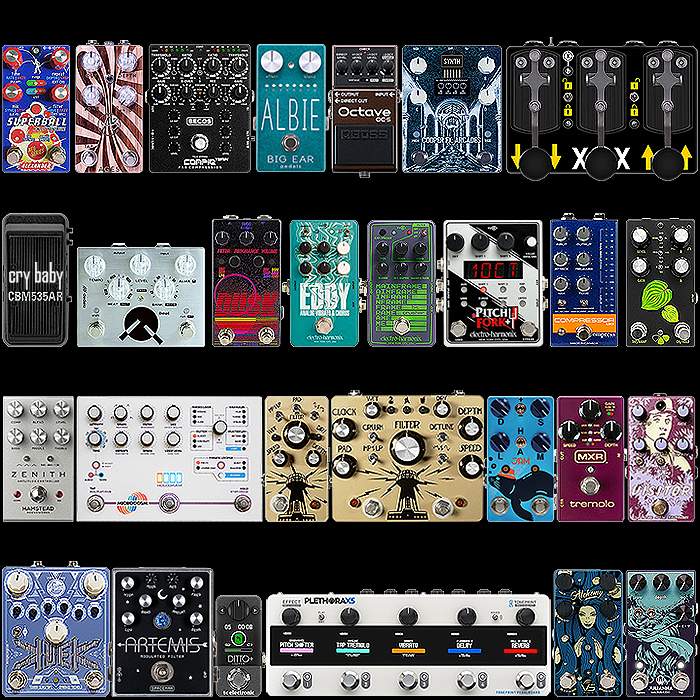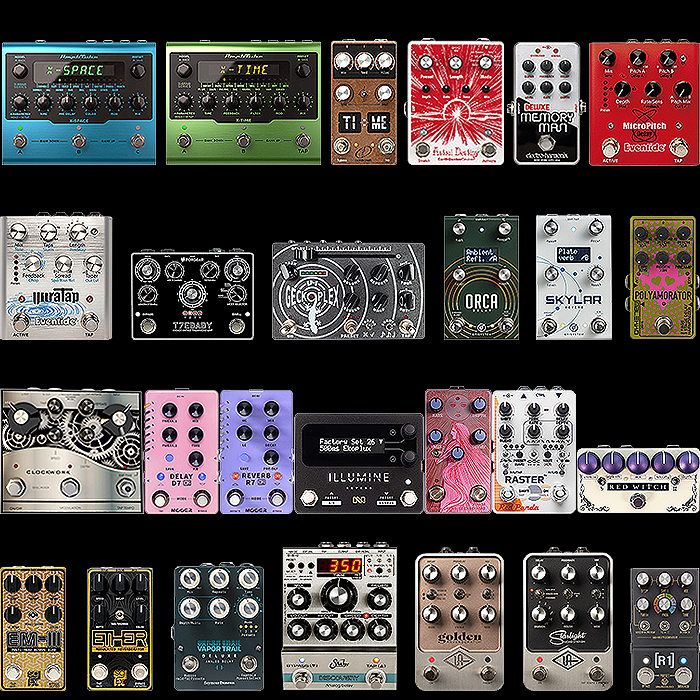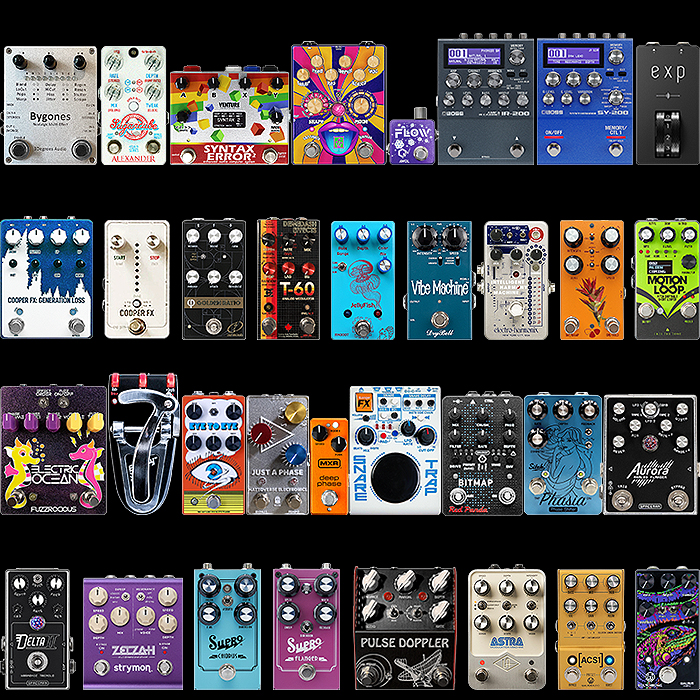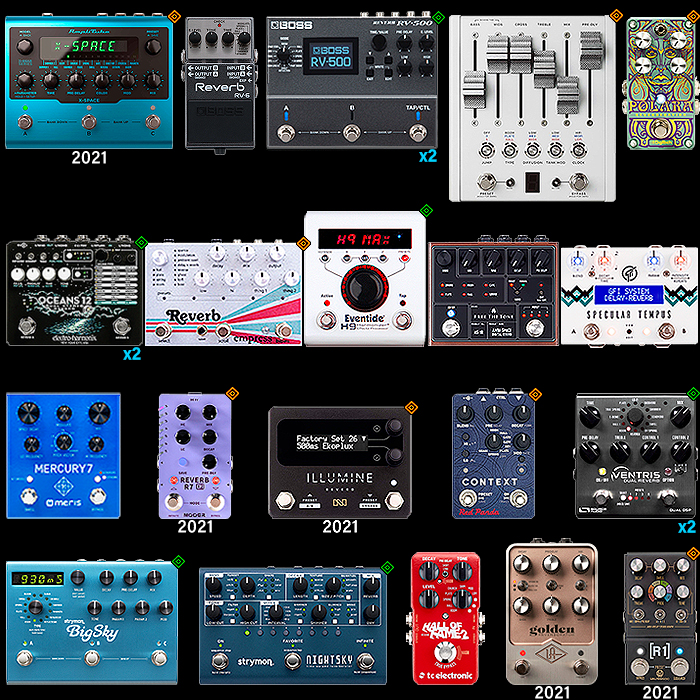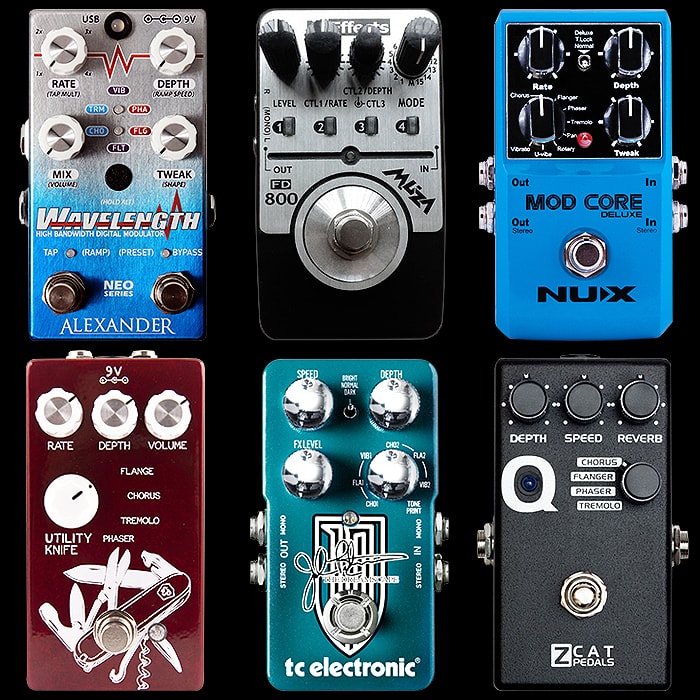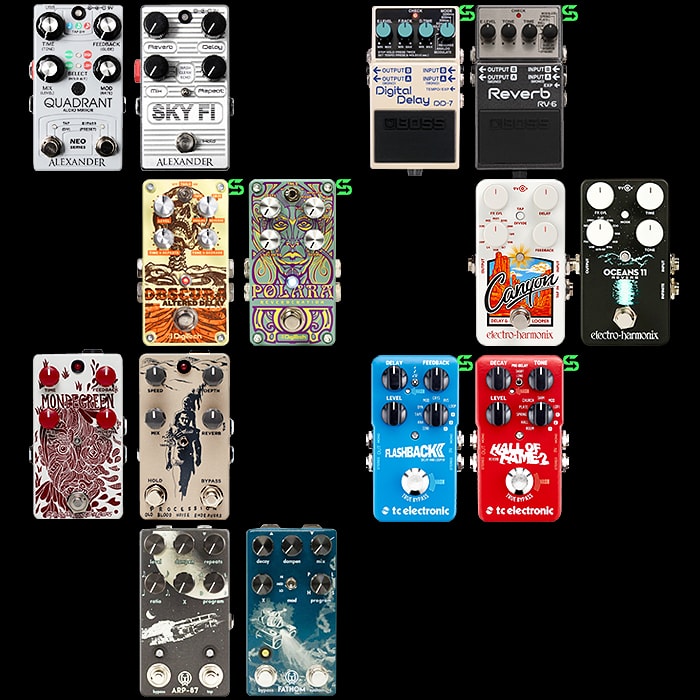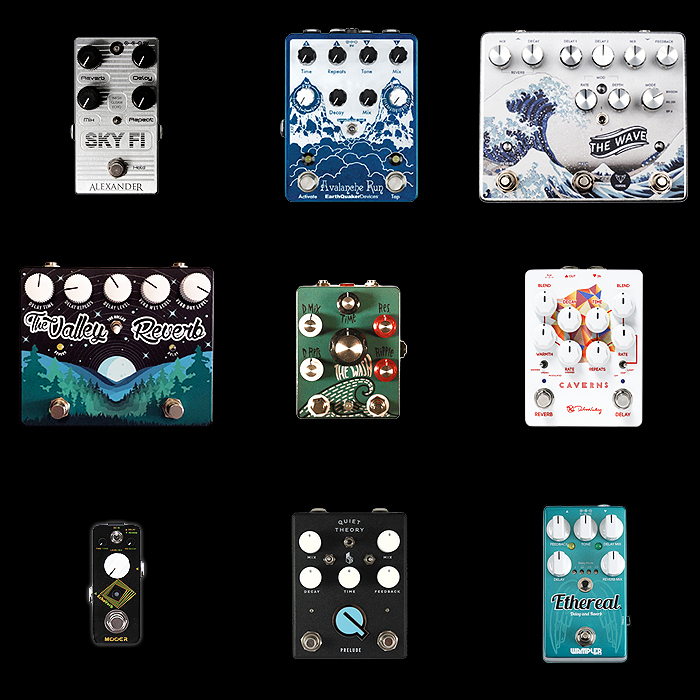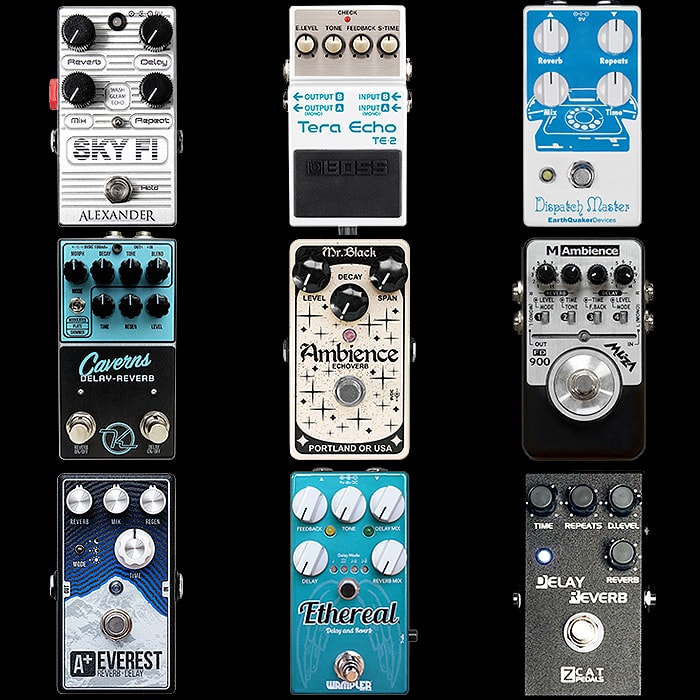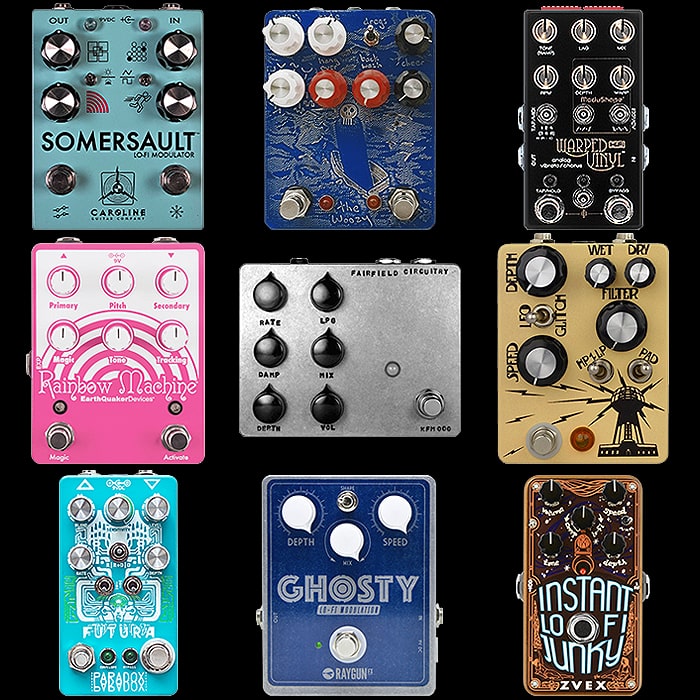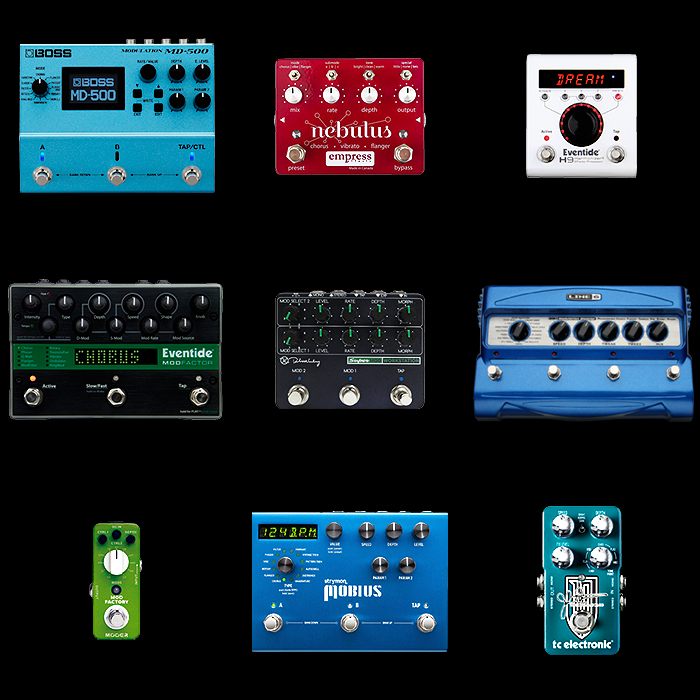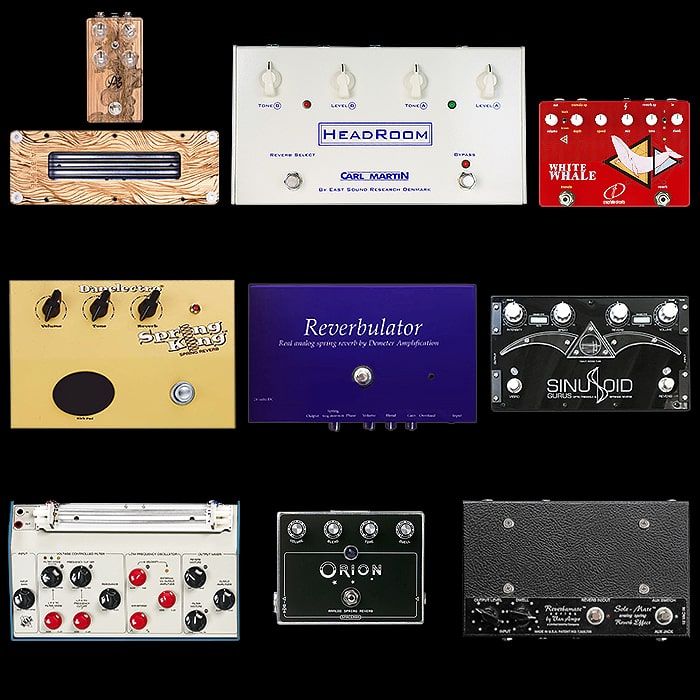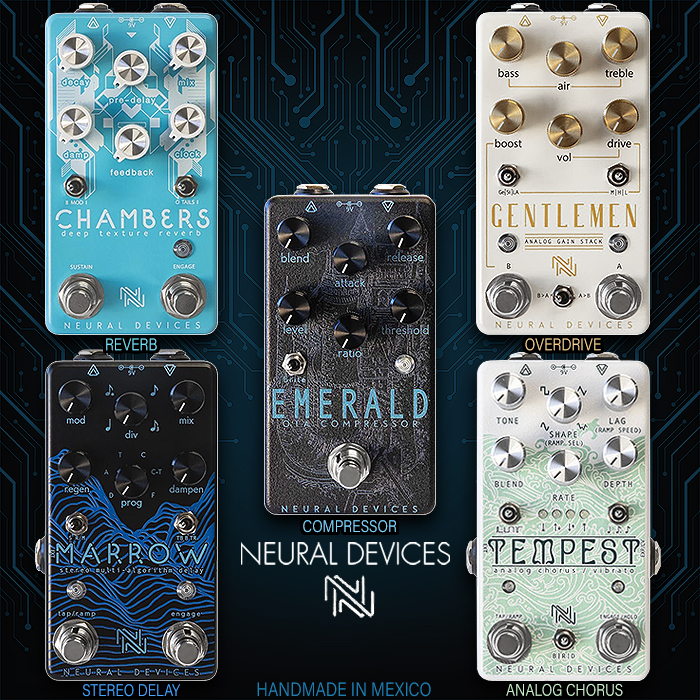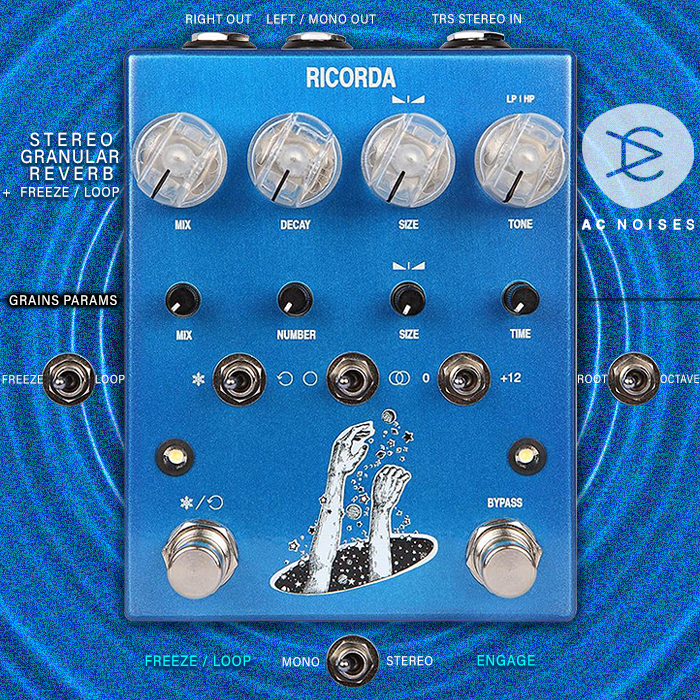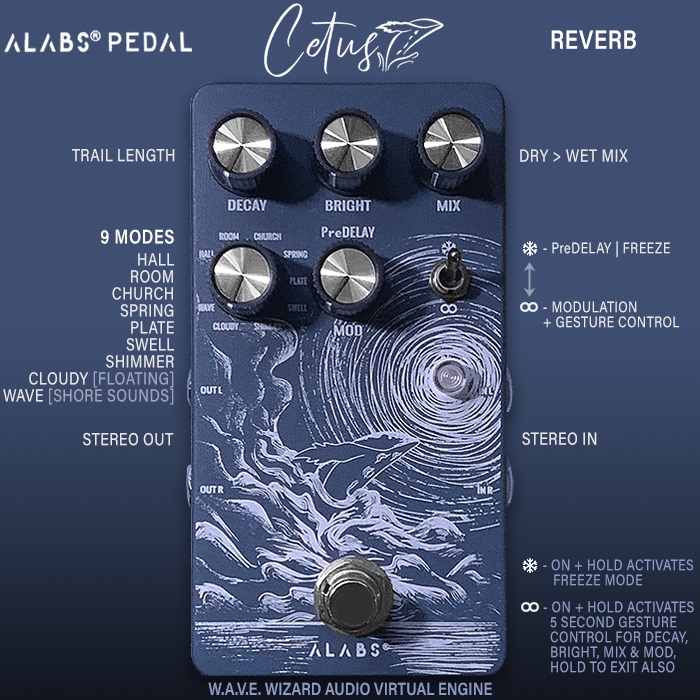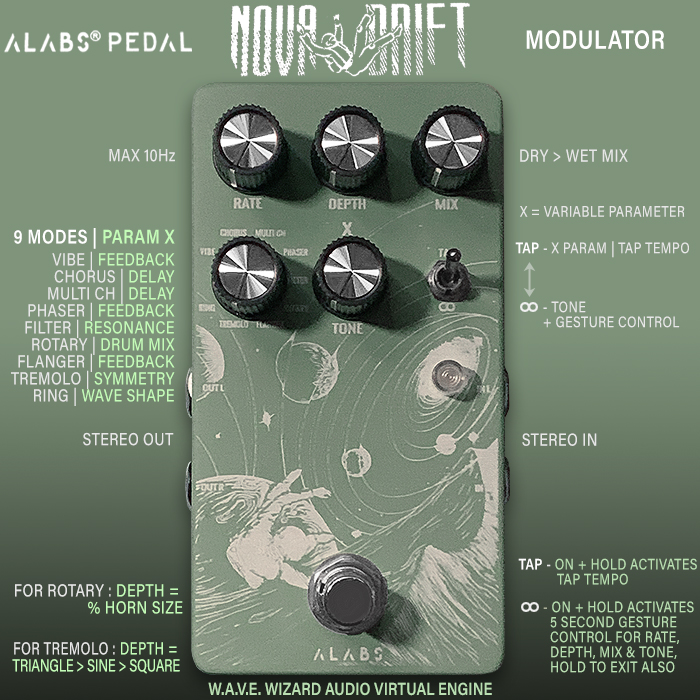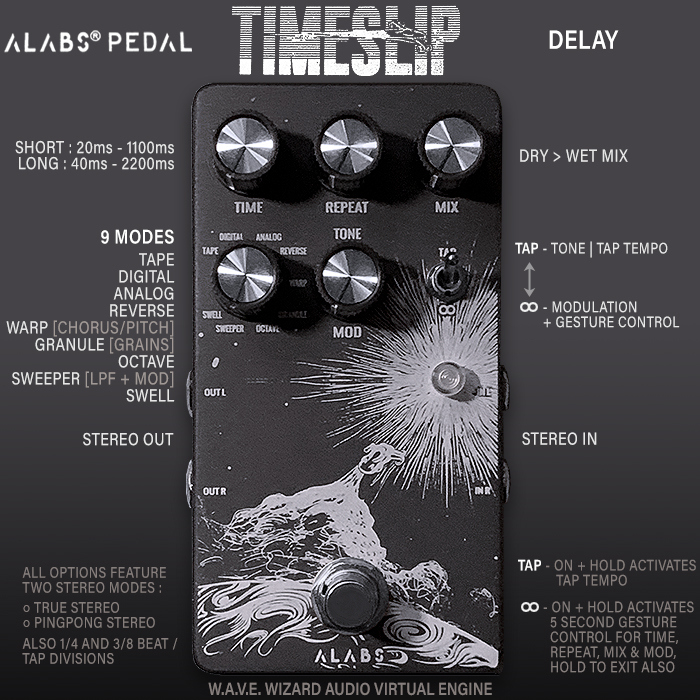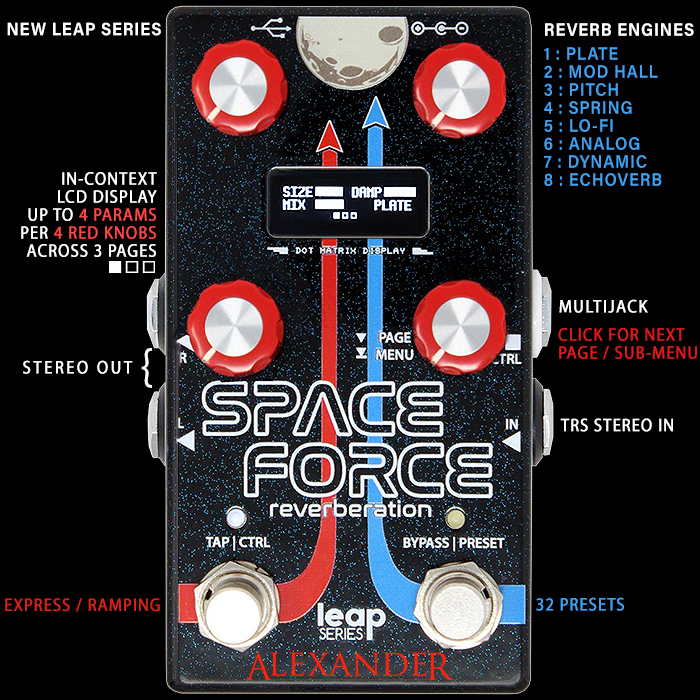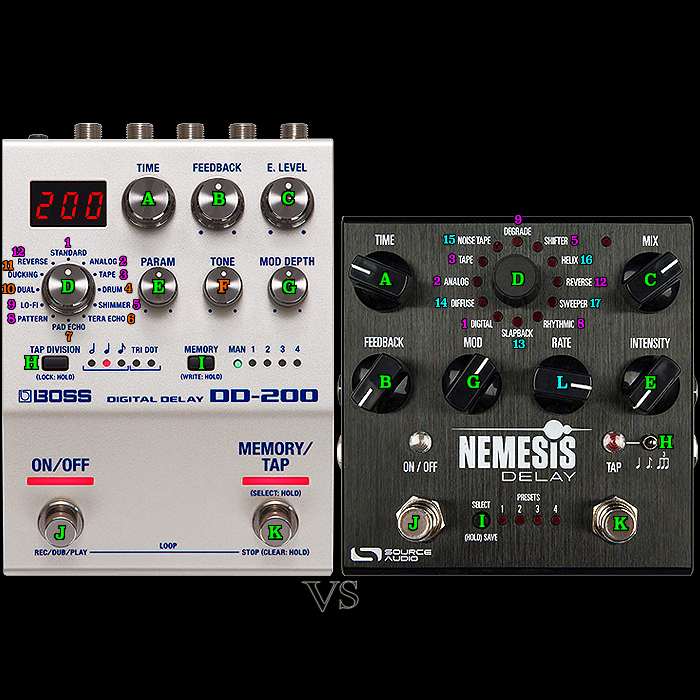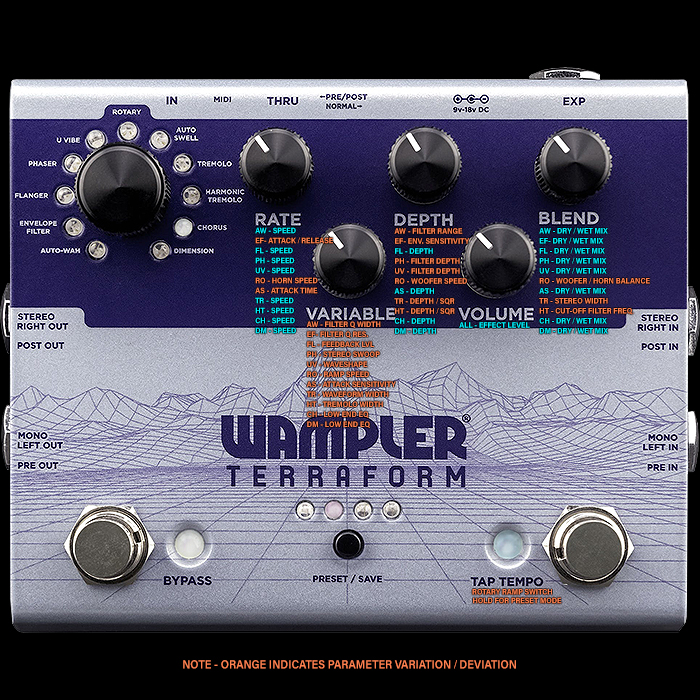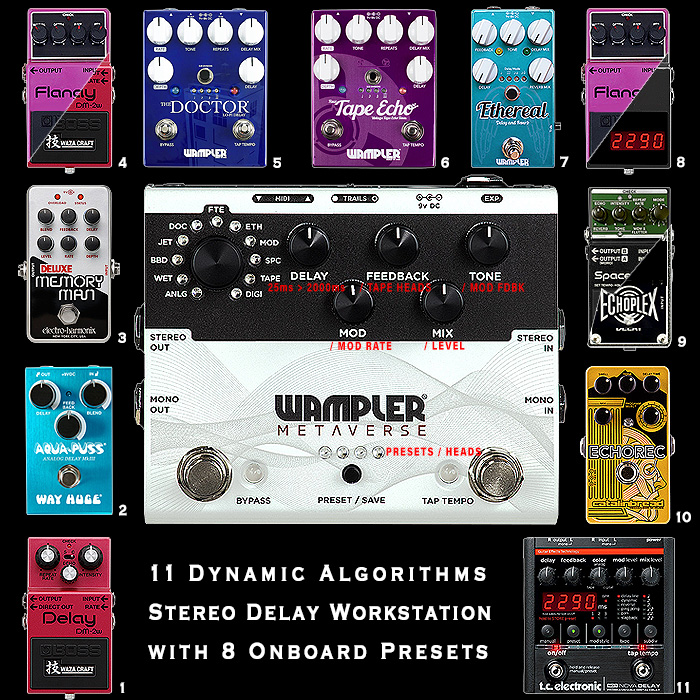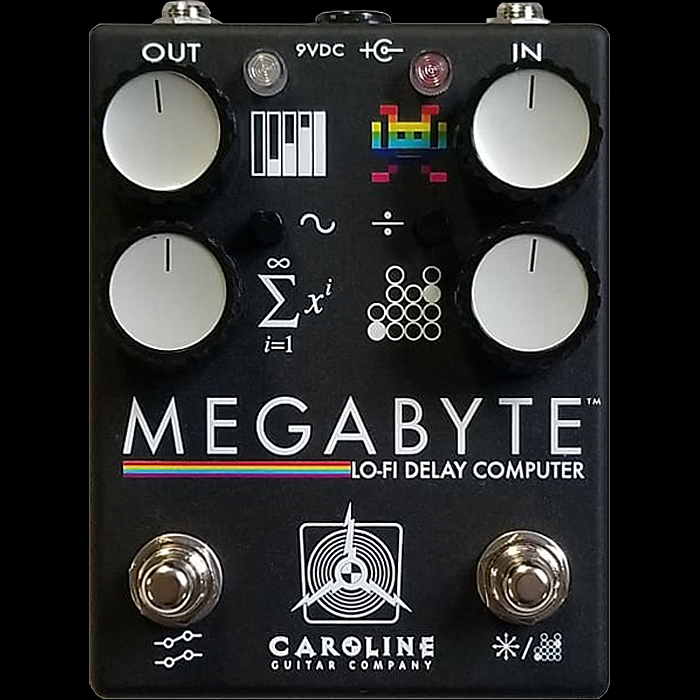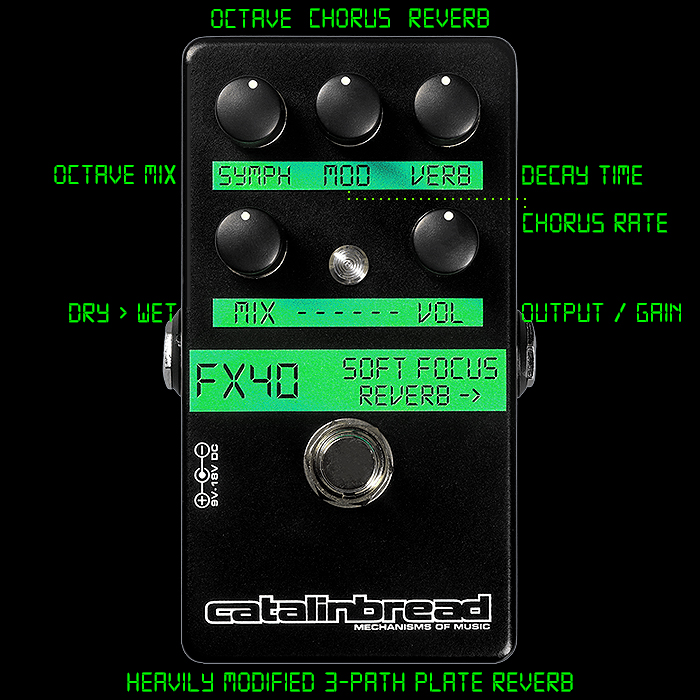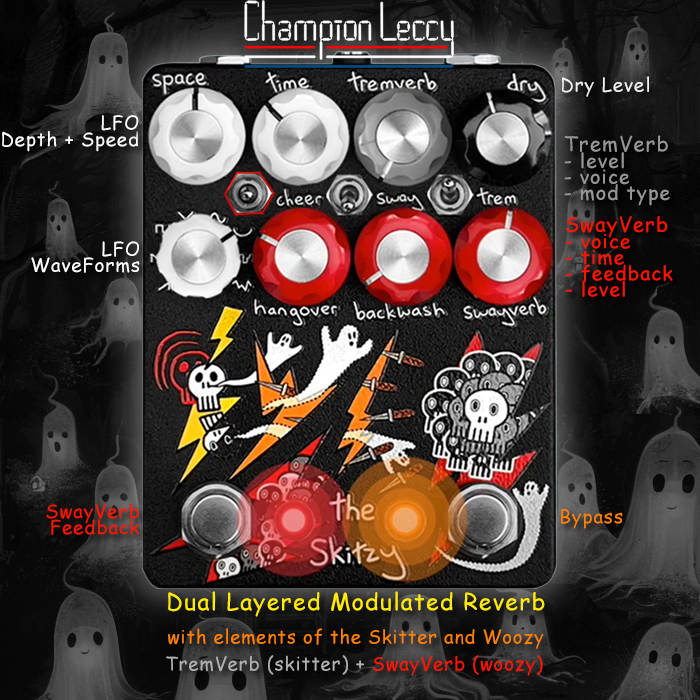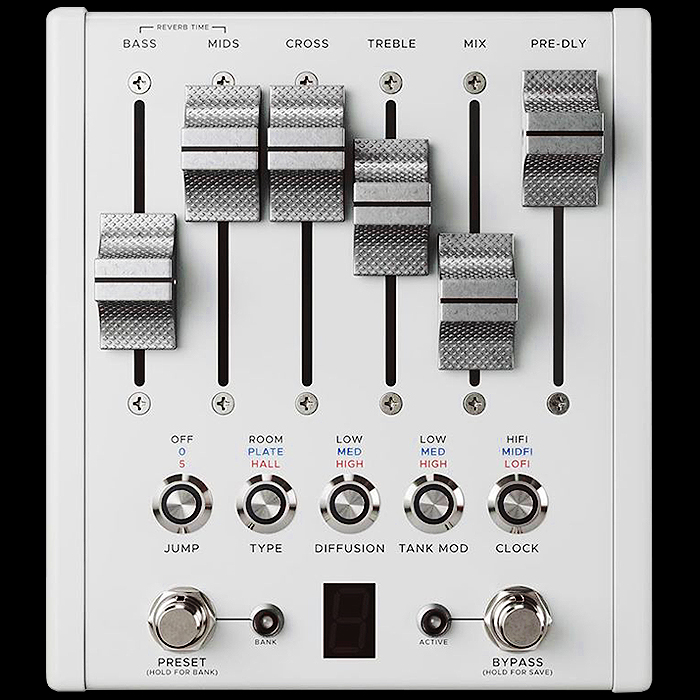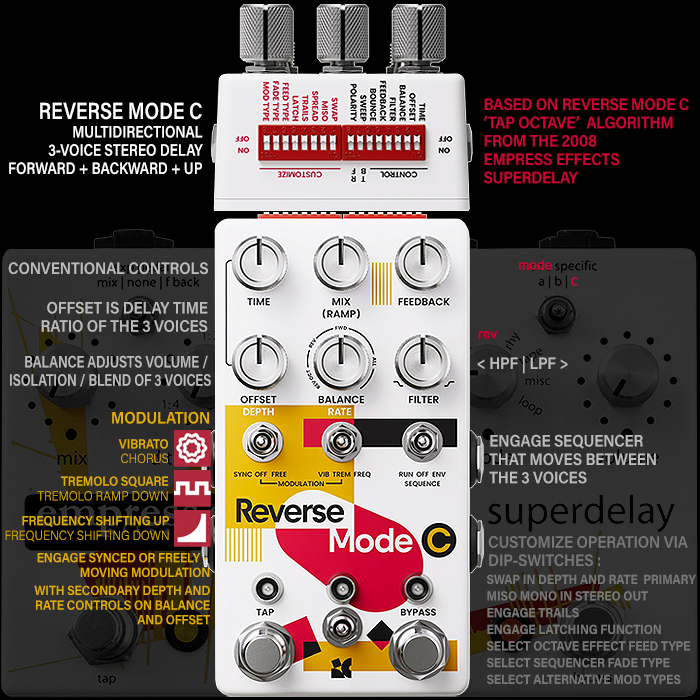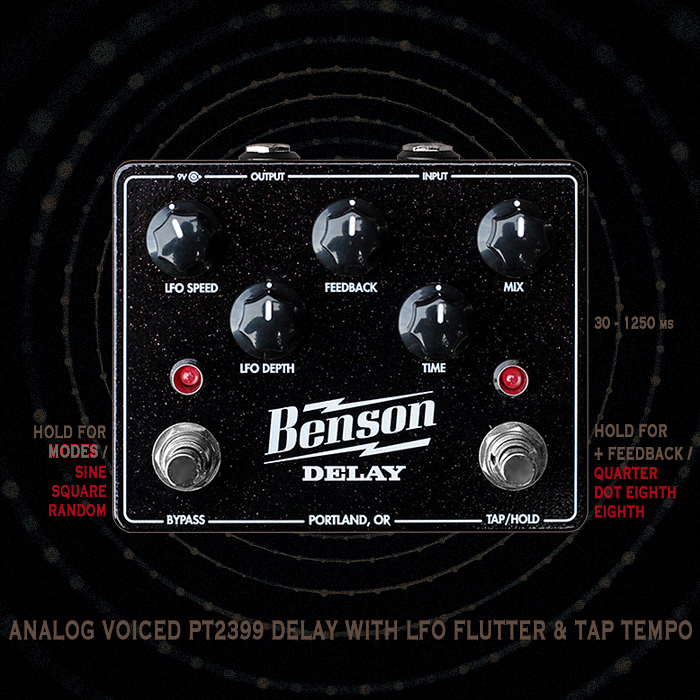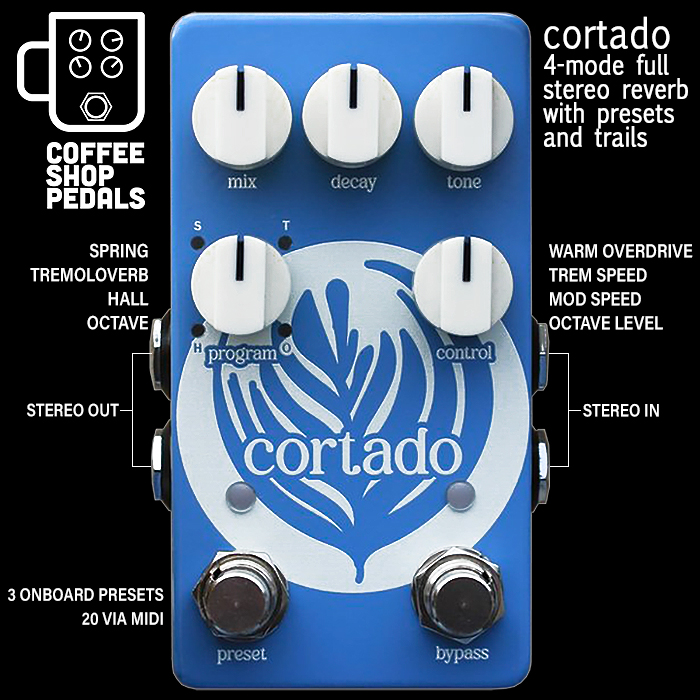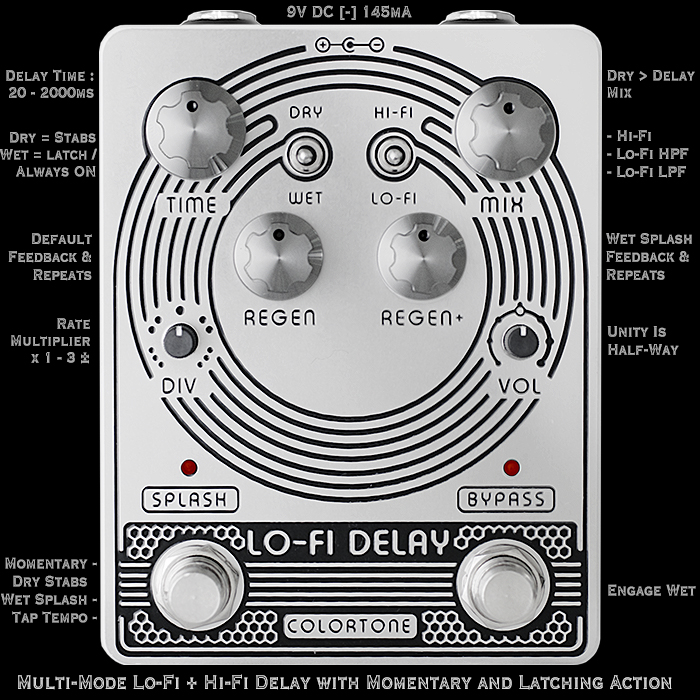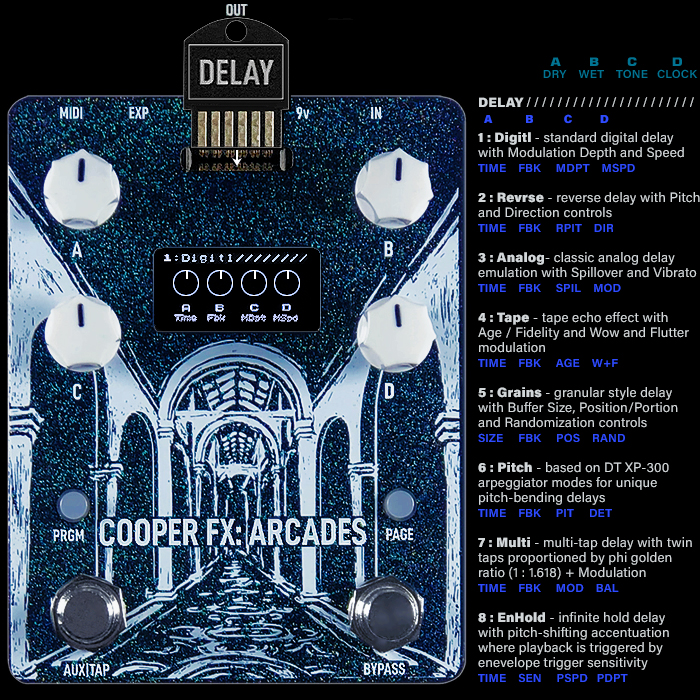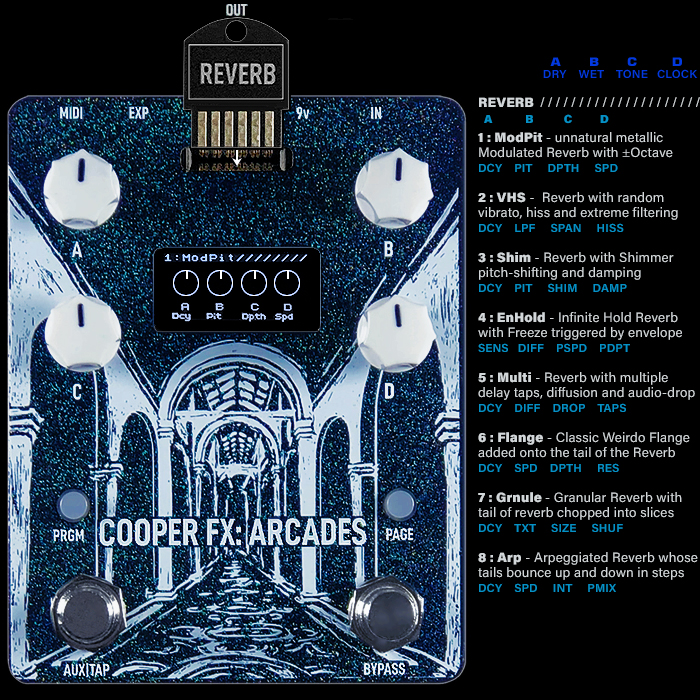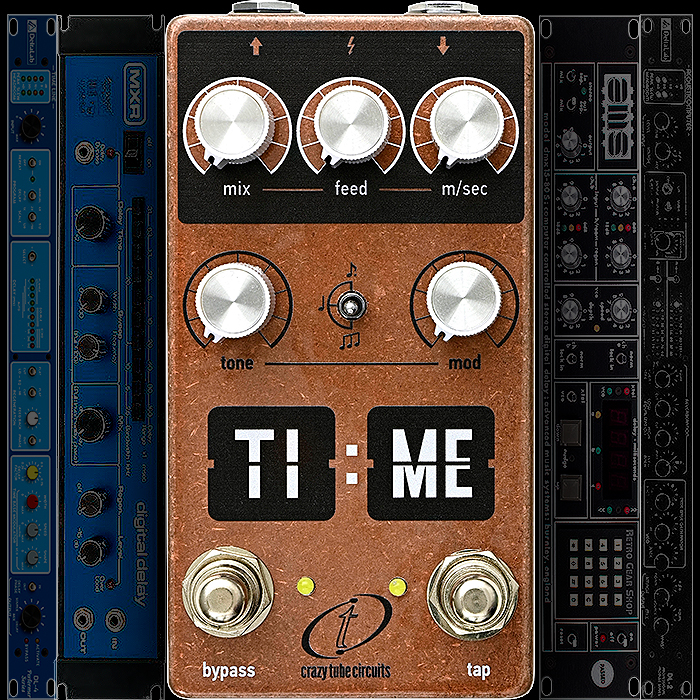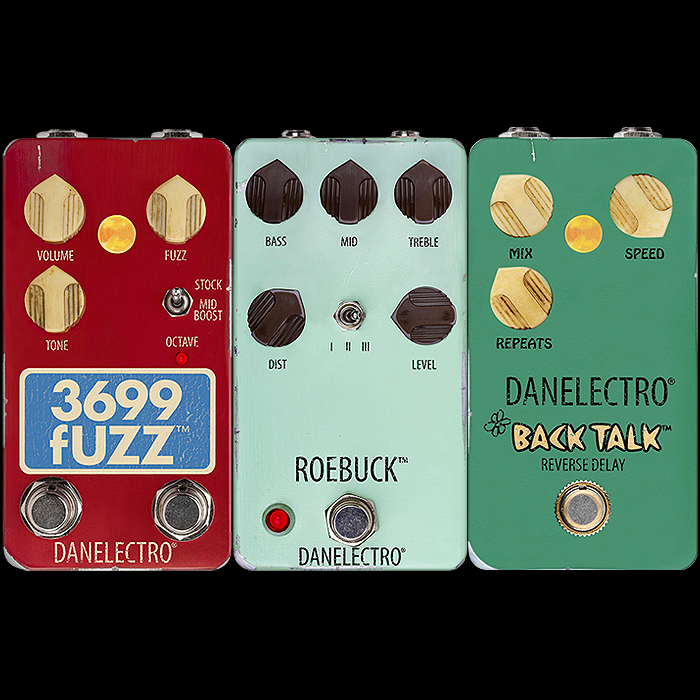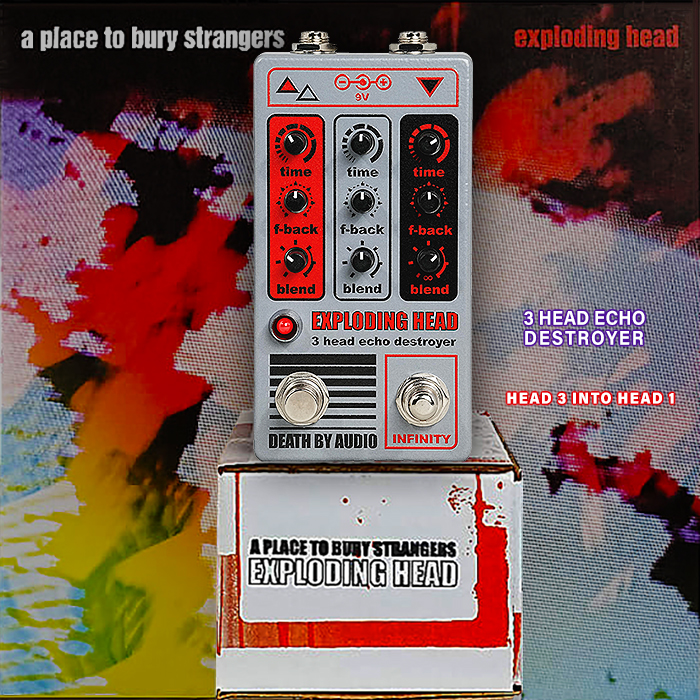Universal Audio Enters the Pedal Game with Three Compelling UAFX Studio-Style Effects Units - Astra Modulation Machine, Starlight Echo Station and Golden Reverberator
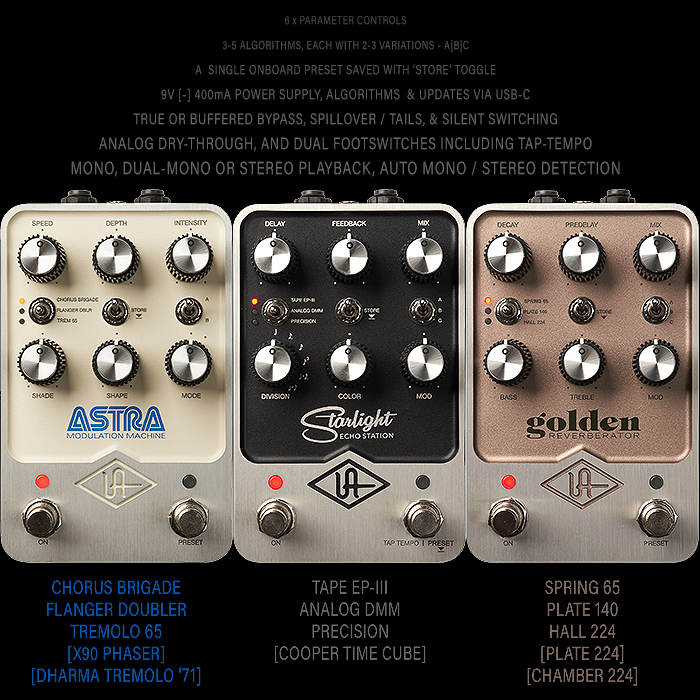
I think it’s clear now what Tore Mogensen has been up to since leaving TC Electronic. Harnessing all those great plugin algorithms already used in Universal Audio’s various Audio Interfaces. I must say I’m quite taken with the elegant styling of those recessed milled aluminium enclosures. I know the jury has been somewhat mixed - but generally I feel those look pretty classy and distinct.
My immediate takeaway is that these very much seem to be targeting prime Strymon territory. Though generally with one more knob at their disposal, and much less of that secondary parameter stuff which I personally have a love / hate relationship with.
We still await some clarification as to how you add in and select additional algorithms - the presumption is you just scroll through the available ones and probably different banks as such are indicated with different colour LEDs? The presumption is also on additive vs replacement - meaning you have a seemingly endless upgrade path in theory.
These are purported to be full studio quality algorithms - where the focus is very much on those classic tones. I think they are well served by these particular executions control topologies etc. - while I wonder whether there is enough uniqueness and innovation about them versus where they fit into the marketplace - and considering their price point.
RRP / MAP pricing is set at $499, reduced to a retail price of $399 / £355 in Sweetwater and Andertons currently. So I would surmise rather at the pricier end for number of algorithms provided - while you do get 2-3 Variations for each.
I will consider the marketplace viability of each in the Final Thoughts below.
Astra Modulation Machine - $399 / £355
There's actually not that many multi-modulation units out there - you obviously have Strymon's Mobius, and Boss' MD-500. And then medium-sized boxes like Empress's Nebula, GFI System's Synesthesia, JAM Pedals' Ripply Fall, Keeley's Super Mod Workstation, and Wampler's Terraform - to name the usual suspects.
The Synesthesia obviously delivers the most goods with a really clever dual-channel interface, while the Wampler Terraform is currently probably the most popular multi-modulator - and deservedly so for a perfect mix of algorithms.
So the Astra Modulation Machine goes into that same target territory, and at the upper level of pricing - but relatively with the lowest amount of algorithms. You get 3 by default in the box, all established classics, and then two additional ones that you can download upon registering your device :
- Chorus Brigade
- Flanger Doubler
- Tremolo 65
---------- - X90 Phaser
- Dharma Tremolo '71
The are controlled by Speed, Depth, Intensity, Shade, Shape, and Mode, and weirdly have just two A|B variations - versus 3 - A|B|C on the other units.
Dual footswitches of course - with single Preset selection on the right-hand one.
Demos sound fine, if a little bright. We will discuss the comparative merits in Final Thoughts below.
Starlight Echo Station - $399 / £355
The delay edition has an interesting mix of Tape-style, Analog BBD simulation and pristine Precision Digital style delay. With the garden-hose-based Cooper Time Cube Mechanical Delay - offered up as an additional download for when you register your unit.
So algorithms are :
- Tape EP-III
- Analog DMM
- Precision
---------------- - Cooper Time Cube
And the 6 controls for these are - Delay, Feedback, Mix, Division, Coloraturas, and Mod.
Here you get 3 - A|B|C variations per algorithm, and Tap-Tempo and Single Preset sharing the right-hand footswitch.
These days I'm very much about tape delay - courtesy of my Strymon Volante. And my preference there is more likely to be Echorec or Space Echo versus the Echoplex variant offered here - so somewhat limited utility for me.
Golden Reverberator - $399 / £355
The 224 reference here obviously identifies those as Lexicon 224 style effects - which is really what the Chase Bliss Audio Automatone CXM1978 is all about. Otherwise you get very classic Spring, Plate and Hall algorithms which sound suitably impressive. Once more you need to register your unit to get the 2 x 224 bonus algorithms :
- Spring 65
- Plate 140
- Hall 224
--------- - Plate 224
- Chamber 224
The six controls here are all very obvious - Decay, PreDelay, Mix, Bass, Treble, Mod, and are further served by 3 -
A|B|C Variations.
Right hand footswitch is Preset once again.
A classy Reverb once again - but is there enough different about it for it to compete?
Demos and Sound Samples
Final Thoughts
So tackling these devices one by one and comparing them with their usual suspect competitors yields some interesting results. Obviously Strymon don't have a multi-modulation candidate in the medium form factor - but we very much have all those mid-size boxes mentioned above - and for me personally I would probably still be looking at the Gfi Synesthesia and Wampler Terraform first. I'm not exactly sure who would pay a little over the median price for the Astra Modulation Machine - over those already successful candidates.
Obviously it has an advantage of form factor over the Terraform - but again - if I wanted a multi-modulator - I still feel I would be better served by the existing category champions.
For a mid-box delay you are looking at the Boss DD-200 and Source Audio Nemesis as the leading contenders - possibly the Keeley Delay Workstation, Meris Polymoon and Strymon Dig and El Capistan too. I did a useful head-to-head of the DD-200 versus the Nemesis quite recently - and in this context once more they would probably be my likelier candidates. Obviously we also have the hugely successful Keeley Eccos and Walrus Audio D1 to contend with at the compact enclosure size. For me there would seem to be a number of more suitable candidates for my preferences - and certainly in delivering a broader range of algorithms.
Finally for the Golden Reverberator there is a slew of very attractive existing mid-size boxes which will undoubtedly also have a Boss RV-200 contender in the near future. For now we have the EHX Oceans 12, Keeley Delay Workstation again, Meris Mercury 7, the Ventris and Collider from Source Audio, and the BlueSky and Flint from Strymon. Again I feel that overall the Golden Reverberator possibly comes up a little short in that company. Especially when you compare it the killer feature set of Walrus Audio's new R1.
The real feather in the cap of those Universal Audio pedals is the prisinte Studio Algorithms they have onboard, and that seemingly unlimited update path - wile I feel the interface could have been made a little more special for those purposes - and in particular how you select additional algorithm modes.
In a year's time these pedals may all have more algorithms to them - while at launch, my overall feeling is that these are not quite strong enough to sustain that $400 ticket prices - particularly when matched against what the competition is already doing.
My choices in a head-to-head with each of these - at that same enclosure format / footprint - would likely be the Synesthesia, then DD-200, and finally Ventris. What say all of you?







